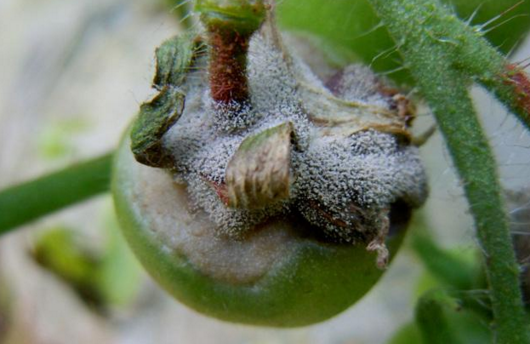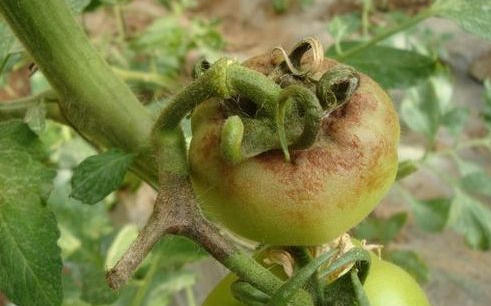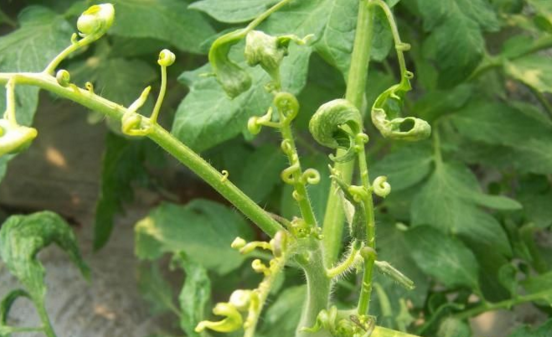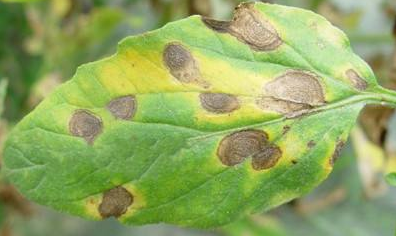Gray mold
It is the main disease of greenhouse tomatoes, which is common and serious. From the root of the wilted corolla, the first onset, grows the mold layer, and then develops into the leaves, fruits, stems, water-stained large gray-brown lesions, the disease ministers out of the gray mold. By airflow, rainwater spread, bad weather in the rainy days, relative humidity of more than 80%, moderate temperature 20 ~ 25 ° C, serious incidence.

Integrated prevention method
1 Choose resistant varieties, such as Jinpeng No. 1, Shanghai Cooperation 908, etc. 2 Reasonable rotation, high temperature shack in summer. Strengthen the release of wind, reduce the humidity in the shed, properly control the watering at the beginning of the disease, promptly remove the diseased leaves and the lower old leaves, and bring them out to be buried or burned outdoors. 3 In the early stage of the disease, spray 50% speed Keling or Puhexin 100 times solution, or 50% carbendazim or thiophanate 500 times solution, spray once every 7 days.
Late blight
Also known as the epidemic disease, the greenhouse tomato is more serious than the open field when it is damaged. The main damage to the leaves and fruits, the lower leaves of the plant first onset, the tip or edge of the leaves showed irregular dark green lesions. When the humidity is high, a white mold is formed at the border of the disease. The fruit onset is mostly in the surface of the fruit near the fruit stalk before the fruit is colored. It is irregularly water-stained and brown in the later stage. After the formation of the central diseased plant in the field, it is transmitted by airflow and rainwater. Even rainy weather, low temperature and high humidity, high planting density, and partial application of nitrogen fertilizer are likely to cause late blight.

Control method
1 Select resistant varieties and carry out rotations with other crops for more than 3 years. 2 planting density should not be too large, improve ventilation and light transmission conditions, reduce indoor humidity. 3 chemical agents for the prevention and treatment of 600-800 times solution of toxic bacterium, Ethyl aluminum phosphate or Phytophthora 200 ~ 250 times solution, 75% chlorothalonil 500 times solution, alternate spraying, spray once every 7 days, 2 to 3 times in a row .
Viral disease
A common disease in greenhouse tomatoes, such as mosaic, stripe, fern, and mosaic, is lightly harmful, has a certain yield, and streaks and Tibetan leaves cause narrow and distorted leaves, and plants are dwarfed and endangered. Big or no production. The onset temperature is 20 ~ 25 ° C, drought, water shortage, lack of fertilizer, heavy mites, white mites, mechanical operations, contact transmission.

Control method
1 seed treatment, soaking seeds with 10% trisodium phosphate solution for 20 min. The diseased plants were found to be taken out and taken out in time. 2 Use chlorpyrifos, fast, sputum, imidacloprid, etc. to control aphids and whitefly, the morning temperature is low, white powder is not suitable for flying, and the spraying effect is good. 3 stage spraying of virus inhibitors, such as 0.3% potassium dihydrogen phosphate, phytopathogenic and 20% virus A, 83 antagonists, the whole growth period of 3 to 4 times, prevention-based.
Fusarium wilt
Also known as wilt disease, continuous cropping in the greenhouse, flowering and the beginning of the disease began, first from the lower leaves yellow dead, gradually spread upward, the dead leaves do not fall off, the base of the roots is created, the vascular bundle turns brown. It is a soil-borne disease and spreads on the ground. The temperature suitable for onset is 24 to 30 °C.

Control method
1 Select resistant varieties, rational rotation, cultivate disease-free and strong seedlings, remove the diseased roots and bring them out and bury them outdoors. 2 using chemical agents to control nematodes, rooting before the onset of the drug solution, using 50% carbendazim 500 ~ 600 times solution, or 10% double effect spirit 200 ~ 300 times solution, each plant 0.25 ~ 0.5kg liquid, 10 days irrigation Once, even 3 to 4 times.
Early blight
It is an important disease on tomato leaves, which occurs mostly in the fruiting stage, endangering leaves, petioles, stems and fruits. In severe cases, the leaves are broken and the elliptical lesions on the leaves have concentric patterns. When wet, black mold grows on the lesions. Shape. Most of the stems are damaged at the branches, and the lesions are elliptical. By airflow, rain, insects, room temperature 26 ~ 30 ° C, relative humidity 80% or more, high temperature and high humidity is conducive to the onset.

Control method
1 The planting density should not be too large, double ridge mulch film cover cultivation, dark watering, pay attention to ventilation, reduce humidity, increase phosphorus and potassium fertilizer, and improve plant disease resistance. It was found that the diseased fruit was removed in time and taken out of the room. 2 Early blight pathogens have strong drug resistance, mainly for prevention. Before the onset, 70% mancozeb 500 times solution, 50% carbendazim 500-800 times solution, or 50% chlorhexidine 1000 times solution is sprayed evenly. Once every 10 days, 4 to 5 times in a row, the prevention effect is good.
Automatic Massage Foot Bath Machine
The automatic massage foot bath machine is a device that uses water and massage rollers to provide a relaxing foot massage. It usually has a basin filled with water and has built-in massage rollers that move and massage the feet. The machine may also have other functions, such as heat therapy, air bubbles, and vibration. Users place their feet in the basin and the machine provides a soothing massage that helps relieve tension and improve foot circulation. Some automatic foot massage machines also come with removable attachments for additional massage options.
Automatic Massage Foot Bath Machine,Foot Spa Massageer,Heated Foot Spa,Foot Bath Massage Basin
Huaian Mimir Electric Appliance Co., LTD , https://www.mmfootbath.com